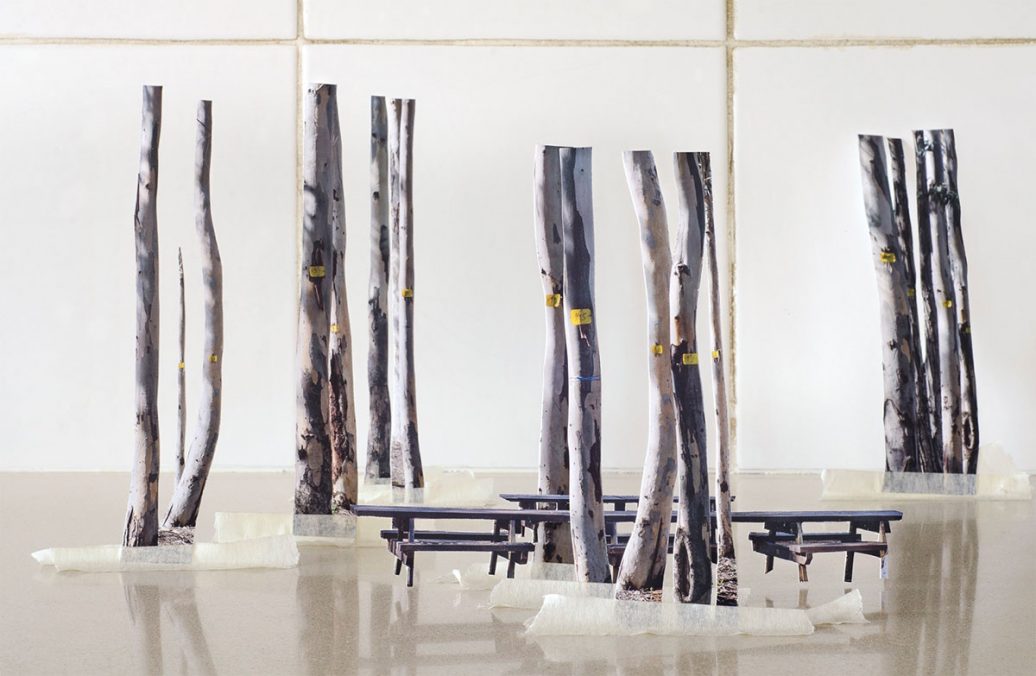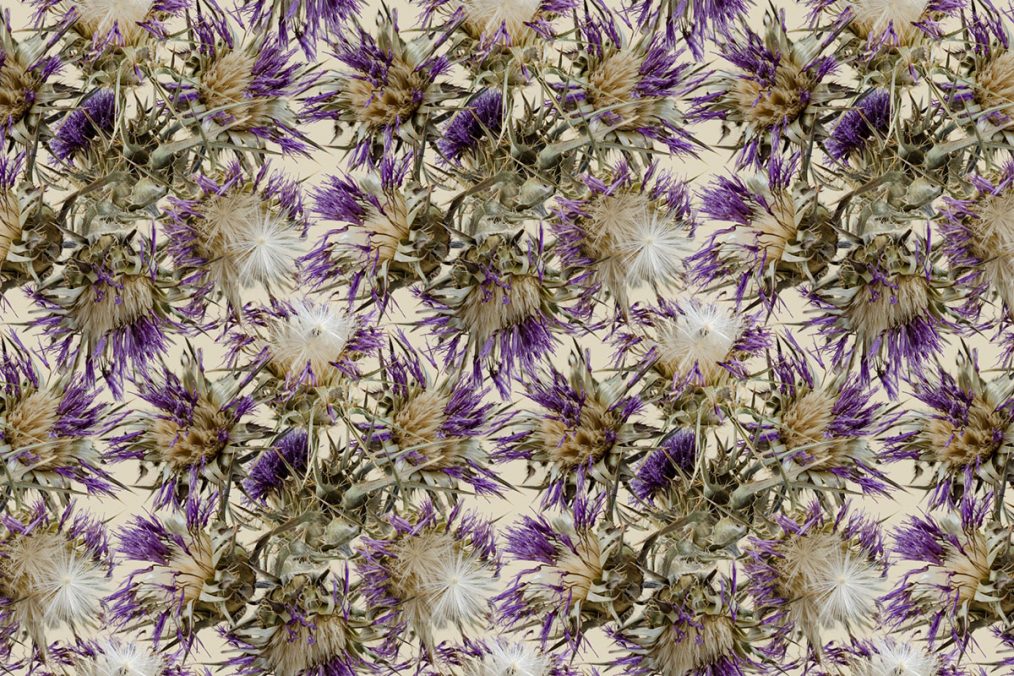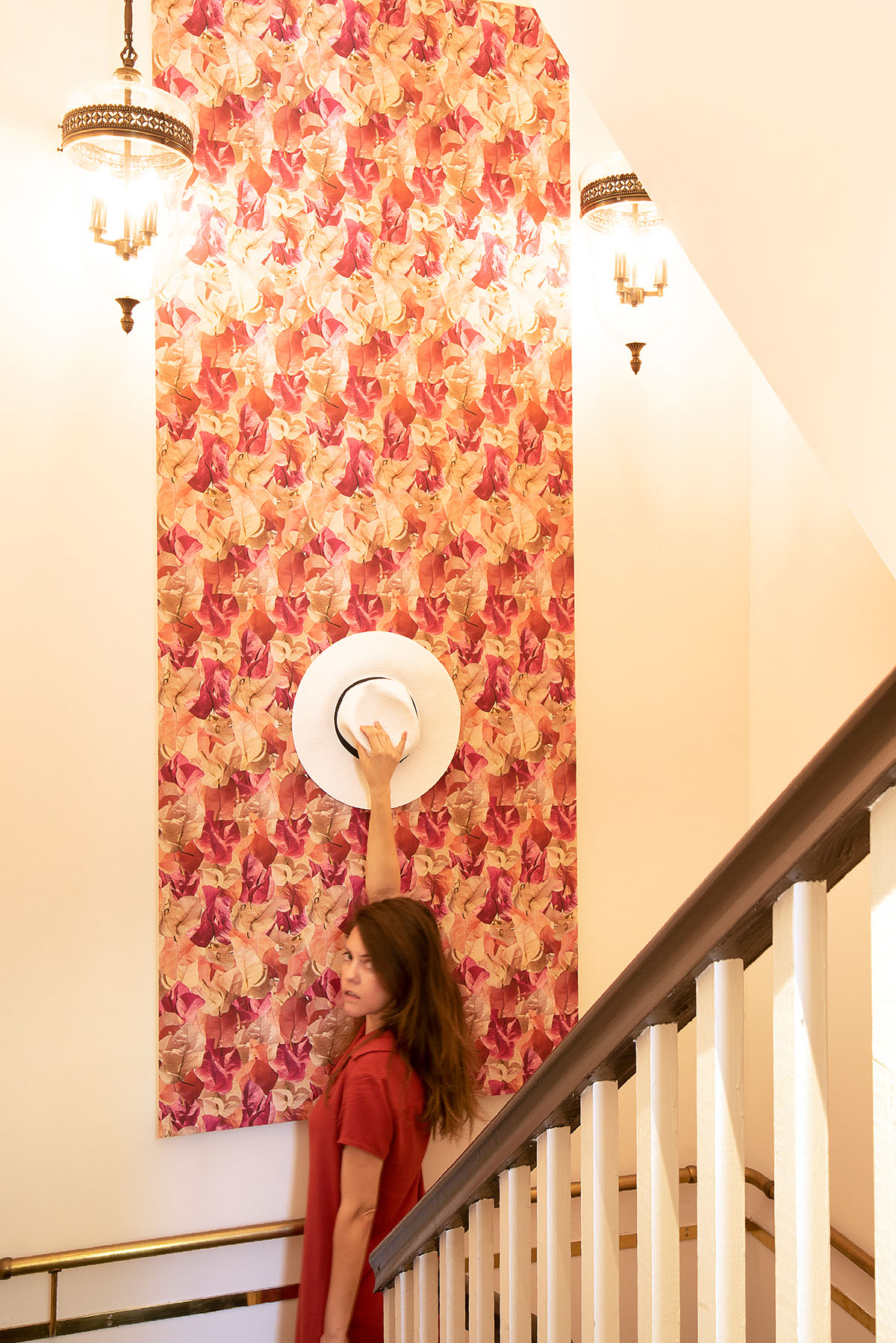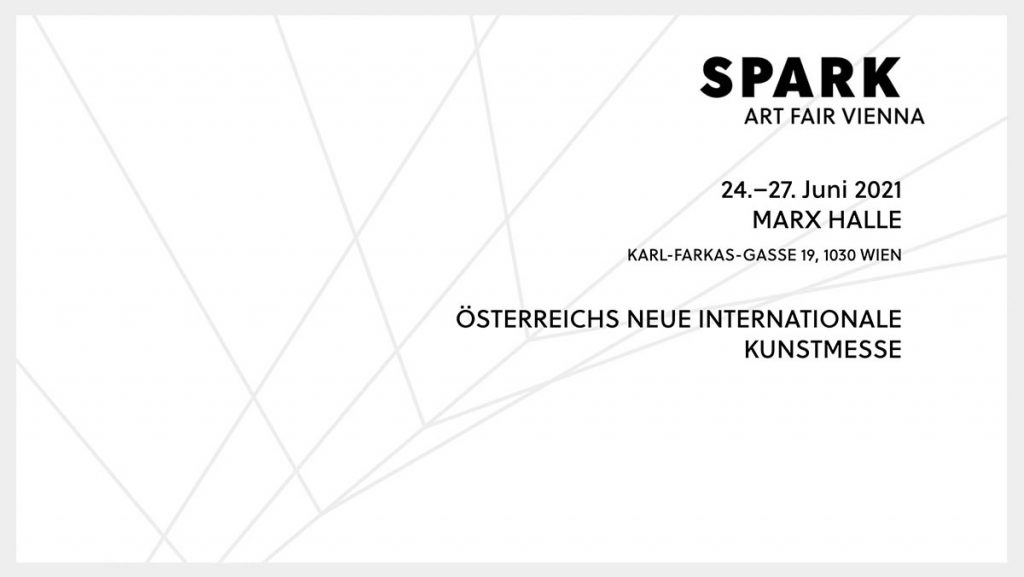
She has completed her M.F.A. at the famous Bezalel Academy of Arts and Design and her B.F.A. at the Department of Photography at Bezalel, Jerusalem. Now lives and works in Tel Aviv. Her main medium is photography, alongside collage, assemblage, and installation. In Vera Vladimirsky’s work happens a lot: cultures merge and collide; the mundane is detached from its enclosed capsule by twisting into a scenic view in art galleries and museums, and last but not least, her work makes one think about its past. I’m not talking here about people, but about architectures that one was in some point of time connected. Her work The Last Apartment and the online interview invited me indirectly to revisit a part of my past. In a postmeridian stroll during my winter holidays, I returned after 16 years to my childhood flat. Its spatiality, colors, materials, geometries started to talk with me, but this is a different story… Maybe each of us would choose a totally different place, when needing to experience a „return“ *_ _ _ _ _ _ _ _ _ _ _ _ _ _ _ _ _ _ _ _ _ _ _ _ _ _ _ _ _ _ _ _ _ _ _ _ _ _ _ _ _ _ _ _ Some of this places might be close and others tremendously far.
*the empty lines can be filled in by the reader
Vera, I would like to start this interview with your work series Paper Walls. I was fascinated by reading the genesis of this story. Can you tell us something about it?
It probably started from my childhood—the genesis was my home in Ukraine and its aesthetics, I remember interiors full of different patterns overlapping in many layers. I left Ukraine as a child, and for more than twenty years, I didn’t have a chance to visit. At 27, I came back to my grandparent’s home. Everything remained the same in a way, only it was looking smaller. I was amazed by how these aesthetics kept influencing me. I wanted to react to it somehow, to photograph it wasn’t enough, I wanted to incorporate myself into it. I must say, that moment was a turning point for me as an artist. I realized that documenting a place is not enough for me. I like to deconstruct and then reassemble them. That visit evoked hidden things, it made me think of the gap between ‘here’ and ‘there’ and of ways to create my version of patterns and to combine these two worlds – the ornaments that I remember from my upbringing and the generic local plants in my current home, sometimes dusty and heated by the infamous Israeli sun. This sun is an issue for photographers, storytellers and painters, it is harsh and dazzling. Also, in some of the paper walls, one can recognize the damaged flowers. I am attracted to all these imperfections, they are very ‘down to earth’ and create a specific language. I feel that in Israel, but not only, the aesthetics is in dialogue with the culture. I have an immense joy to create patterns, by using photography in all different ways. To develop such samples takes time. Sometimes are a few weeks, sometimes even months, but I am not done with this project, I will always create more. Also, new pattern series are being conceived and will be shown soon, it’s inspired by the classical bouquet (lilies, roses) and carries more of a ‘commercial’ approach.

You have shown part of these works in various places: from art institutions to galleries and private residences. What adds a site to an artwork?
As an artist, I am happy to exhibit in various institutions, but I am very honored to bring my home inspirations to people’s homes. Both of these acts are equally valuable.
What reactions and feedback have you received in Israel with this series?
Well, very good reactions, I must say. Generally, people are pleasantly surprised to see the familiar in a new light.

Let’s say you will show the same series one day in Ukraine. How do you think that the audience would receive/ perceive this work?
I do not know how it will be received, but I hope they will think it’s different, I am not sure if they saw wallpaper made of sun-burnt thorns, plus – most of the wallpapers I saw are created by drawing and graphic design softwares and not using photography as the main medium. As a whole, art can create a dialogue, since the whole idea of ‘home’ in my work acts as a point of reference, it embodies more than the actual appearance of it and allows me to ask broader questions about culture, identity, history and more, leaning on this theme.
For the series The Last Apartment, you went to re-visit 25 former flats, flats that you and your family used to live in and a few intended ones, flats that were closed to be part of a portfolio of places where one has lived but that for a reason or another did not happen to become such. Tell us something about this long journey.
I was photographing interiors in the ones that I could. Sometimes, especially in Ukraine, I only took pictures from the outside. Being such a long time in Israel, after 20 years of return, I did not know if people that were living now in those places would feel comfortable if we would visit them, neither I knew if I would feel pleasant to knock on their door. We were visiting our former home, but also felt as a kind of tourist now. As for the images of the apartments I never really lived in – they make a very small part of this work. It’s just another step in the journey called ‘visiting the past’, to refer to points of longing and options that were missed. From the long process of photographing these apartments, I accumulated a few thousand Images.
It’s just another step in the journey called ‘visiting the past’, to refer to points of longing and options that were missed. From the long process of photographing these apartments, I accumulated a few thousand Images.





